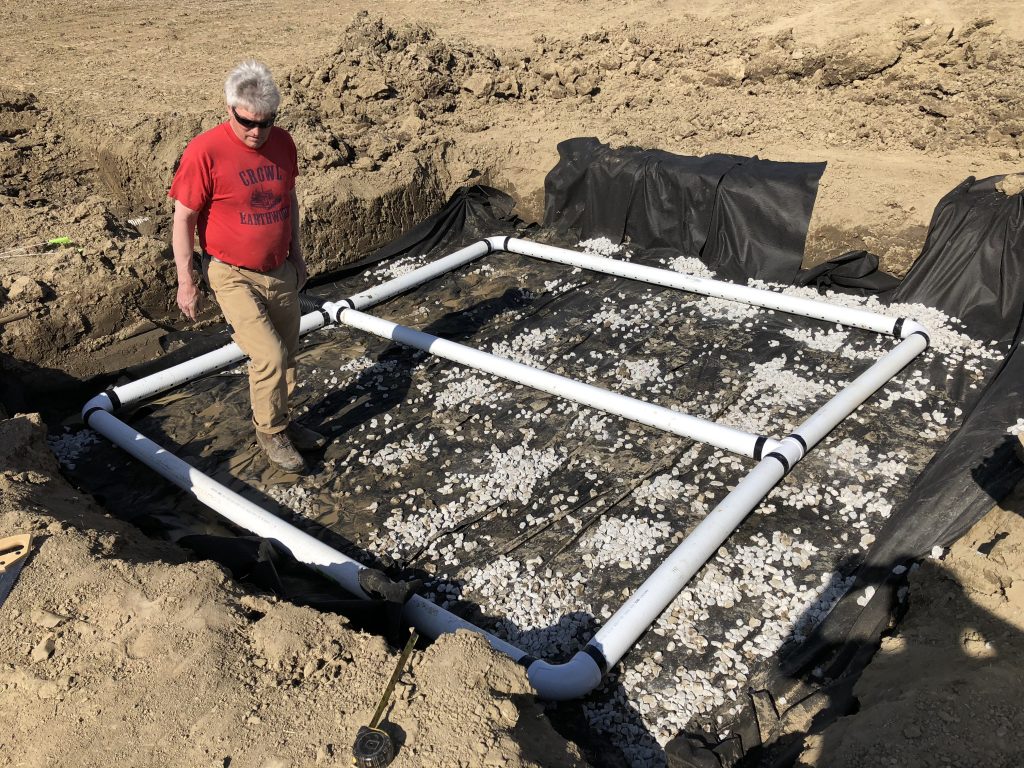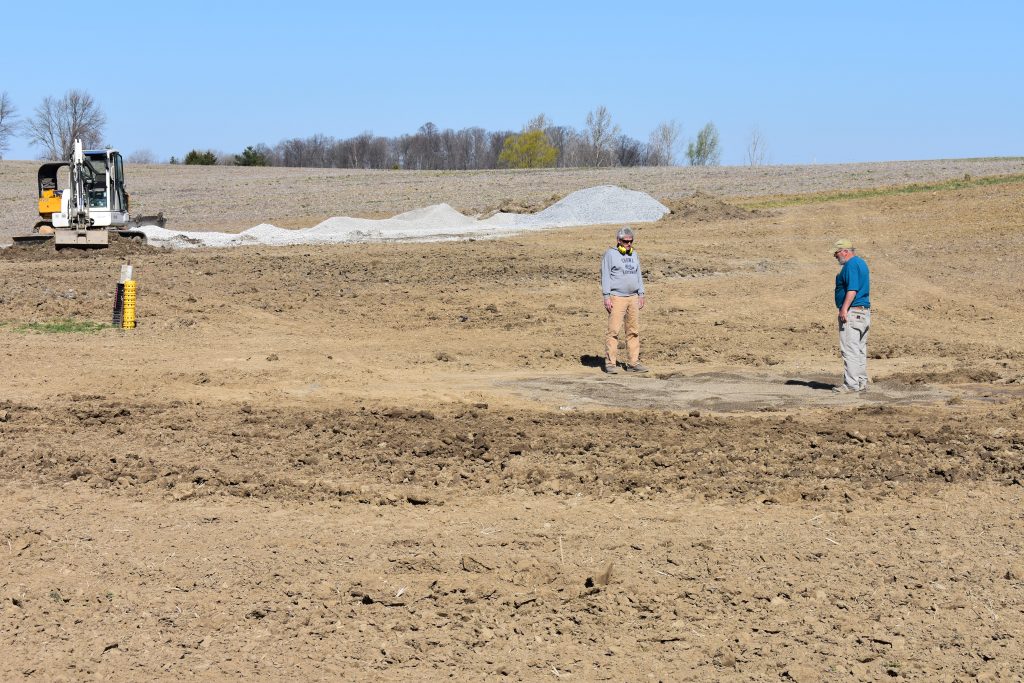What it is
A blind inlet is a structure that is placed in the lowest point of farmed depressions or potholes to minimize the amount of sediment, and potentially other contaminants, that would be transported to receiving ditches or streams.
How it helps
The most common practice that is used to drain farmed depressions is a tile riser, which is essentially a pipe that acts as a direct conduit for water from the field to the receiving ditch or stream. This can result in excessive loading of sediment and other contaminants to surface water from fields that are often several miles from the ditch or stream. This means that the runoff water quality from these fields that are relatively far from the stream can greatly impact the water quality because there is no filtering or other type of processing that occurs during drainage of the excess water. A blind inlet is used in place of the tile riser to filter sediment from the water that is drained from the field.
Planning ahead
This practice is applicable to any landscape where surface drainage patterns result in isolated depressional areas (aka potholes) and the climate is sufficiently humid to result in reduced trafficability or the loss of crops due to excessive amounts of water in the depressional area. The size of the blind inlet should be determined by the acreage of the depressional area and local precipitation patterns. An engineer should be consulted in designing a blind inlet, to ensure adequate ability to remove excess runoff water.
Maintenance
The cost of operating and maintaining this practice should be initially minimal. The life span of the blind inlet is dependent on the tillage practices in the depressional area. If tillage is used in the area, producers should expect an 8-10 year lifespan of the practice before having to replace it. Producers can till directly over the blind inlet to ensure sedimentation does not inhibit infiltration. No-till producers may use gypsum at 1 to 2 tons per acre to improve infiltration after sedimentation.
Videos
Blind inlets are subsurface structures installed in low points of fields to minimize the amount of runoff from fields into ditches or streams. Used in place of tile risers, blind inlets filter sediment during drainage of excess water from the field. Unlike tile risers, blind inlets can be farmed over. They don’t interfere with planting, harvesting or other farming activities.
Photo Gallery
SHARE
Ready to learn more?










